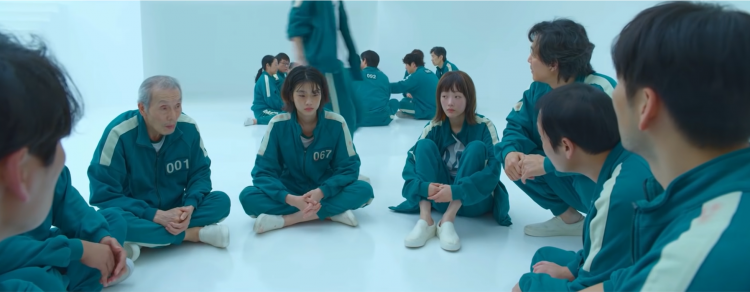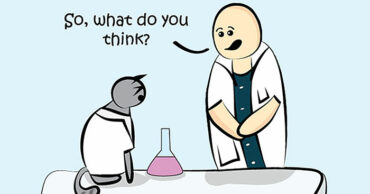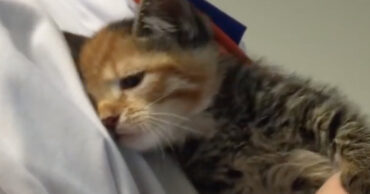
The fourth episode of Squid Game, “Stick to the Team”, and the fifth episode, “A Fair World”, saw a dangerous game of tug of war. The setup was like this. The players were told to form teams of ten, and then they would randomly be paired with another team of ten. They will then be led to a high-suspending platform with a rope passing through a guillotine in the middle. They will pull for their lives, and if the losing team loses ground, the guillotine will cut the rope in half, sending the losing team to fall to their deaths.
As expected, there were severely buffered and severely nerfed teams. Gi-hun’s team was among those we could classify as “nerfed” as they had two females (not in a good build) and an old man who was no longer physically strong. While on the elevator shaft towards the top platform where they would be playing, the old man, Il-Nam, told the others that because of his old age, he had a lot of experience playing child games, and he had the right strategy for them and underlined that tug of war was not about just pure strength, as there was a strategy involved as well.
Today, we will not have a “how to survive Squid Game” type of gimmick. Instead, we would analyze the old man’s strategy and see if it would work for us “to survive Squid Game.”

The strategy
To summarize the old man’s strategy, it involved both strong players in the very front and the very back. The one in the front, the “leader,” would lead, pulling the rope to their side, and should be very good “in the offense.” Meanwhile, the one in the back would serve as the “anchor,” the player for the “defense.” The rest of the players should be on opposite sides of the rope to ensure balance. They can also hold the rope in their armpits for better grip. Lastly, they had to lean back for 10 seconds to resist and negate the force coming from the opposite side, making the players tired.

Why and how this would work
Let’s analyze the physics involved here. Let’s start at the back. The back player would need to hold and resist the forces that the nine people in front of him were thrusting toward him. This means the person at the back should have a firm grip on the ground. Strong resistance (friction) would ensure the team continued pulling the rope towards their side.
The back player also needed to have a strong pull. To pull the nine others in the front, he should be able to exert a pull equivalent to or greater than the force that the enemy team was pulling them out.
This may be hard to visualize because we only discussed one player. An ideal setup would be the strongest player in the back and the second strongest in the front. If the strongest player were to be in the front, there was no guarantee of a good-enough force to pull the rest back if they were in danger. The second strongest assured they would get enough force to pull the rope with the most optimum support. And then, the three weakest players would be in the middle so that the forces exerted by those in the front can be balanced in the middle, and those in the back can outweigh those in the middle.
And then the leaning back process is important because more of the players’ weight is being pulled by gravity. This additional weight adds up with their normal force (in Layman’s terms, the force their feet exerted to keep anchored on the ground), allowing them to peg themselves firmer, resisting more force.
Why and how this would not work
Now, let’s talk about the cons of this strategy. If you attended a physics class or two way back in high school, you would remember that there were a lot of numerical quantities to be dealt with. A way that the old man’s strategy would not work if the force exerted by the enemy team’s pull was far greater than the resistance force the team exerted. And a way for that to happen is when Gi-hun’s team is pared up with Deok-su’s beefed-up men. Therefore, this strategy would be unviable if a significant difference in strength was involved.
 Follow Us
Follow Us





